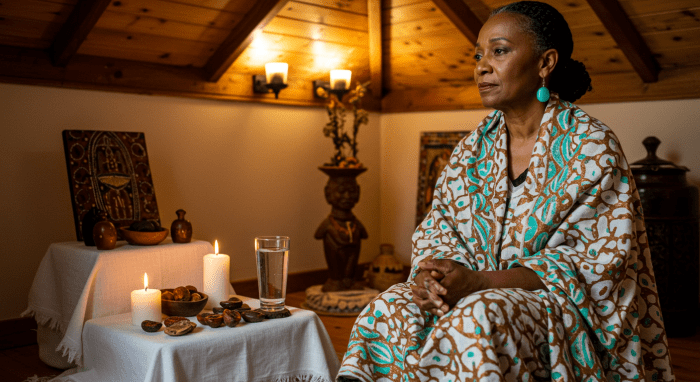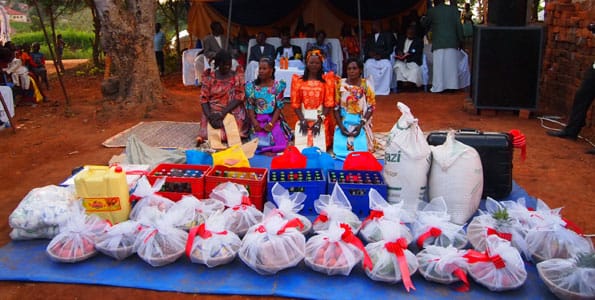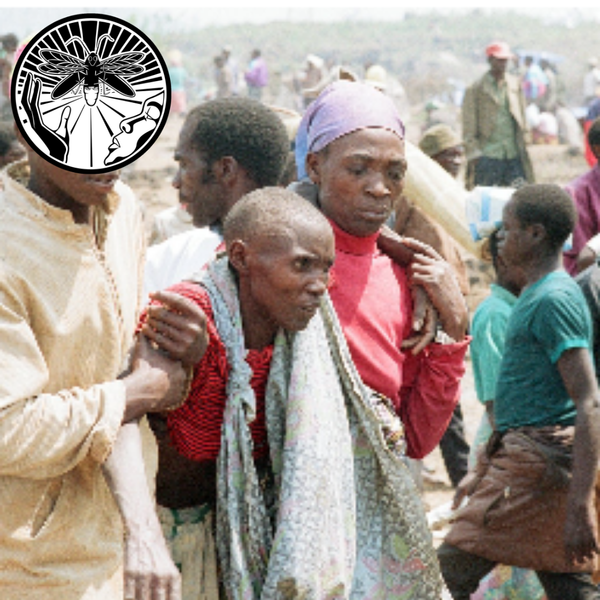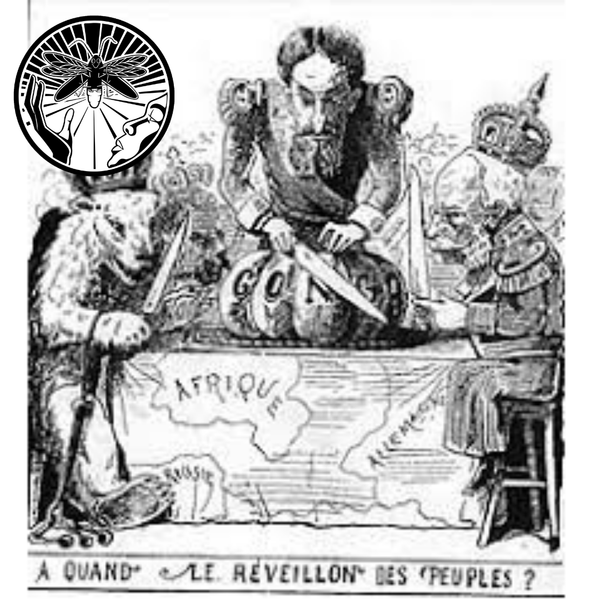Catastrophe in Meritah’s Great Lakes - Part I: Africa’s World War
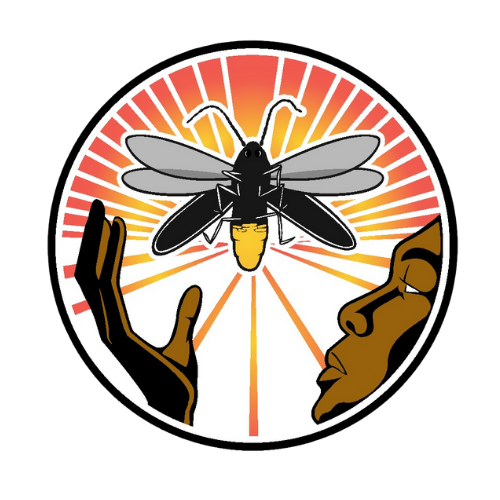
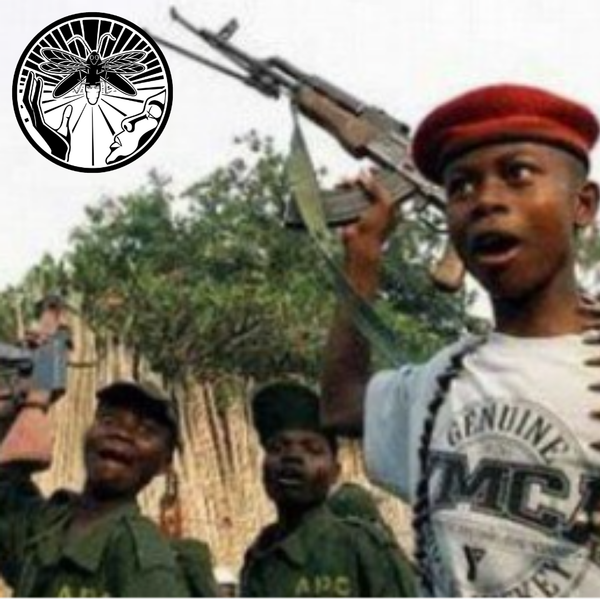
by Kasabez Maakmaah
More than 5.4 million people died in the Democratic Republic of Congo (DRC) between 1998 and 2007, according to the International Rescue Committee. These deaths are said to be the direct or indirect consequences of an ongoing crisis in the country that continues to this day. While it has been difficult to find current statistics on the death toll, there is no indication that the conditions that led to the initial 5.4 million deaths have improved. This has been the most deadly conflict since World War 2 and the death toll on record is close to the number of Jews killed during the Holocaust. The actual number of deaths, from 1998 until the present, is likely to be much higher.
BACKGROUND
Very little attention has been given to this situation compared to the conflicts in the Middle East for example. When there is mention of it in the media, it is often presented as a tribal conflict between the Hutu and Tutsi, the two main tribes involved in the 1994 genocide in Rwanda in which about a million people were killed in about 100 days. Rwanda, which borders the DRC to the east, was under the control of the Hutus, with the support of the French government and military. Extremists within the government plotted to kill every Tutsi in the country and succeeded in killing about 70%. This happened with the prior awareness of the French and United States (US) governments, as well as the United Nations (UN). Troops from France and the UN were actually present in Rwanda as the genocide took place.
As the genocide occurred, a Tutsi led rebel army, which had been trained and armed by the US, invaded from their base in the northern mountains of Rwanda. The Tutsi force, called Rwandan Patriotic Front (RPF), was led by Paul Kagame. Kagame had recently returned to Rwanda from training in the US at Fort Leavenworth. Kagame’s army attacked and was quickly able to take over the land around the capital and the capital itself. France’s troops had fought back the RPF during the previous few years. However, during the genocide, the French did not fight the RPF. Instead, they ensured the safe exit of Europeans from Rwanda while leaving Tutsis attempting to escape to be killed at Rwandan army checkpoints, literally kicking the Tutsis off of the evacuation buses.
The conquest of Rwanda by Kagame and the RPF led to the exodus of millions of Hutus from Rwanda who feared retaliation. About 2 million of those Hutu refugees flooded into the east of Congo (then called Zaire). Among them was the leadership of the Hutu extremist group that orchestrated the genocide. Most of these refugees in the Congo crowded into refugee camps around the city of Goma.
Paul Kagame was established as the President of Rwanda. He was still president when this article was written. Under his rule, tens of thousands, if not hundreds of thousands of Hutus have been killed in Rwanda, including a massacre of defenseless refugees in which the army fired machine guns and mortars at the crowd of refugees over a course of an entire day, slowing down only for a lunch break. UN “peacekeepers” who observed the massacre with strict orders not to interfere, counted almost 5000 dead and many places where bodies had been removed before they could be counted.
WAR IN CONGO
From 1965 to 1997, the DRC was ruled by Mobutu Sese Seko, who is widely regarded as a ruthless dictator. What is less known about Mobutu is his campaign of African cultural awareness, or authenticité, in which cities were given African names and every citizen was required to take an African name. He warned priest that they would receive 5 years in prison for baptizing a child with a European name.
In 1996, Congolese rebel leader, Laurent Kabila, with the assistance of the governments of Rwanda, Uganda and Angola and an army of mostly Tutsis, with the full backing of the Unit- ed States, overthrew the government of Mobutu. Upon taking control of Kinshasa, Zaire’s capitol city, he renamed Zaire as the Democratic Republic of Congo.
The Rwandan army is accused of killing tens of thousands of Hutus in the DRC following this invasion until 1997.
Kabila later expelled the Rwandan and Ugandan military who then began to fight against him in 1998, invading the Congo for the second time. Kabila then called on support from many neighboring countries including Angola, Zimbabwe and Libya as well as the Hutus. This lead to what has been called Africa’s World War.
In 2001, Kabila was assassinated. His own bodyguard was accused of being the assassin and more than 100 Congolese were arrested as plotting a coup, some are still in prison today and the murder case hasn’t come to a close. Though Congo is not a monarchy, his son, Joseph Kabila, was selected by a council of ministers and military generals within hours of his father’s death to become the new president. Joseph Kabila was still president when this article was written.
From the start of this war until 2004, and estimated 5 million people died. The war was officially ended in 2003 but fight- ing amongst the DRC’s army and various militias still continues in East of the DRC. Most of the fighting has been in the DRC provinces of North and South Kivu in what has been called the Kivu Conflict.
CASUALTIES OF WAR
I was first informed about this issue by Kambale Musavuli, a Congolese man and the Student Coordinator and National Spokesperson for Friends of the Congo (friendsofthecongo.org). Friends of the Congo is an advocacy group whose mission is to: “Raise the consciousness of the world community on the challenge of the Congo and support Congolese institutions in bringing about a peaceful and lasting change.” To address the perspective that this ongoing crisis is the result of a tribal conflict between the Hutu and Tutsi, Kambale shares,
“Ethnicity has to be part of the equation in analyzing the situation in the Congo. However, the predominant driving factor for the divisions along ethnic lines is the drive for power. You have select groups who want to acquire power at any cost and they use ethnicity as a means for achieving power. This is essentially what happened in the 1994 genocide in Rwanda and that has spilled over into the Congo. So we have to be careful and place ethnicity in its right place. An elder shared with me a while ago that, ‘If Religion was an ethnicity, that is what people would have used to gain power in Rwanda.’ The pursuit for power at any cost is the predominant reason for the conflict and in- stability in the Great Lakes region of Africa.”
The Eastern DRC is home to vast deposits of precious mineral deposits including diamonds, cobalt and coltan, tin, gold, wolframite and tungsten. The tragedy is that these minerals seen to have become more precious than life itself.
Throughout this catastrophe, every time the warring factions clash, thousands of civilians are forced to relocate while the militias and armies avoid head on conflict, mostly concentrating on securing strategic locations. The general populace, without the stability to grow food or medicine, has been devastated by the conflict. The vast majority of deaths attributed to this conflict have resulted from hunger and disease that would be easily preventable in normal circcumstances.
Among the ongoing atrocities that have caught global attention are mass rapings, gang-rapings and genital mutilation of Congolese women and girls. Friends of the Congo reports that hundreds of thousands of women have been raped. “If you destroy a woman, you destroy many families thus the whole society. Women in Africa are the caretakers and the backbones of the entire community. Once destroyed, it becomes easy to get access to the land,” Kambale shares. “We also cannot forget that while women are being destroyed, men also are being raped and castrated, all in an attempt to intimidate the local population and move them away from areas rich in mineral resources.”
Mass raping became a war tactic during the genocide in Rwanda. One survivor of that genocide reported being raped five times per day. The Hutus even organized a special rape squadron with hundreds of HIV patients they released from the hospital. This tactic has been carried into the Congo. A woman in the refugee camp in Goma told a reporter from National Geographic, “Every time we move out of this place, we are raped by various bandits.” The reporter also retold the account of another lady and mother of 4 who was raped in her village. After being raped, her husband rejected her.
Also very disturbing are reports that the Mbuti (Pygmies), who are native to the rain forests of the region, have been hunted like wild game and eaten by members of various militias and armies who consider them sub-human. Reportedly, some militias routinely enslave pygmies to forage for forest food and prospect for minerals, a UN official said. Hunters returning empty-handed were killed and eaten. Many of the Mbuti have also been been driven from their homelands by deforestation and resort to begging as their main source of income.
In an environment such as this, no one can feel safe. The deterioration of values is a downward spiral. Some people form militias initially to protect themselves and end up having to resort to the same tactics as those they have been victims of. A Congolese man reflecting on the conditions that led to the death of his pregnant niece had this to say,
“These problems are not made by small people like us. They are made by the greedy people in charge who want money. They bring the war because of minerals. They chase us out of our homes and start looting Congo and this displacement becomes a cultural cycle. Because of this, these children cannot grow up with a good heart. They carry a heaviness in their mind towards these people. They blame those that force them to displace and that hatred will accumulate in their hearts. The hatred will grow.”
In reality, this is just one of countless situations throughout the world in which human lives and nature are being destroyed in order to grant easy access to the land they live on. Wealthy merchants take control of these lands rich in natural resources which are taken and made into products to sell to people across the world. The fact that so many millions of people would be allowed to die for this within a single country is unbelievable. It raises the question of whether there is some deeper agenda other than simple greed.
The East of the DRC is part of the Great Lakes Region of Meritah (Africa). This region is known and recognized as the birthplace of humanity. It is also the source of the Hapi (Nile) River, along which humanity’s original civilisation was established and thrived for tens of thousands of years. This civilization, Kemet, has been the inspiration for all human civilization, reaching across the entire continent of Meritah and most of the rest of the world, including Maanu (North and South America) where pyramids stand to this day.
How will the heirs to this culture residing in this region preserve their culture under the current conditions? Kemetic traditions have been under attack under many forms and disguises for the past 2500 years. It’s important to recognize that this is humanity’s heritage that is under attack and not something that can we can ignore as “someone else’s problem”. It is from Kemetic Culture that humanity relies on as the basis of moral values. By contrast, the genocide in Rwanda took place after 50 years of missionary work in Rwanda by the Catholic Church. If we continue to sit and watch like UN peacekeepers as humanity’s roots continue to be destroyed, if we do nothing as this evil continues to spread, where will humanity turn for wisdom and enlightenment? It cannot continue to be someone else’s problem. If it’s a problem, it is all of our responsibility to put aside our distractions and work towards finding and implementing solutions. It starts with you.

